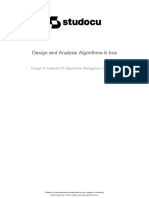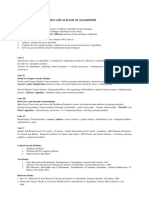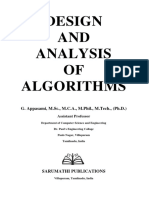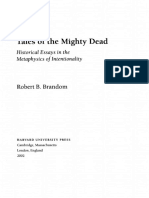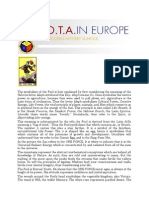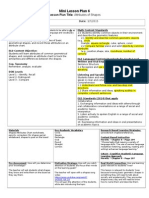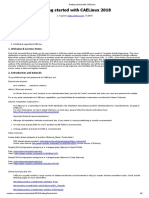0% found this document useful (0 votes)
59 views1 pageDAA Syllabus
The document outlines a course on Design and Analysis of Algorithms, focusing on analyzing algorithm performance, familiarizing with major algorithms and data structures, and applying algorithmic design techniques. It covers various topics including brute force methods, dynamic programming, greedy techniques, and backtracking, along with their applications in real-world problems. The course aims to equip students with the skills to write efficient algorithms and analyze their complexities while promoting teamwork and software development principles.
Uploaded by
iamavp1234Copyright
© © All Rights Reserved
We take content rights seriously. If you suspect this is your content, claim it here.
Available Formats
Download as DOCX, PDF, TXT or read online on Scribd
0% found this document useful (0 votes)
59 views1 pageDAA Syllabus
The document outlines a course on Design and Analysis of Algorithms, focusing on analyzing algorithm performance, familiarizing with major algorithms and data structures, and applying algorithmic design techniques. It covers various topics including brute force methods, dynamic programming, greedy techniques, and backtracking, along with their applications in real-world problems. The course aims to equip students with the skills to write efficient algorithms and analyze their complexities while promoting teamwork and software development principles.
Uploaded by
iamavp1234Copyright
© © All Rights Reserved
We take content rights seriously. If you suspect this is your content, claim it here.
Available Formats
Download as DOCX, PDF, TXT or read online on Scribd
/ 1









